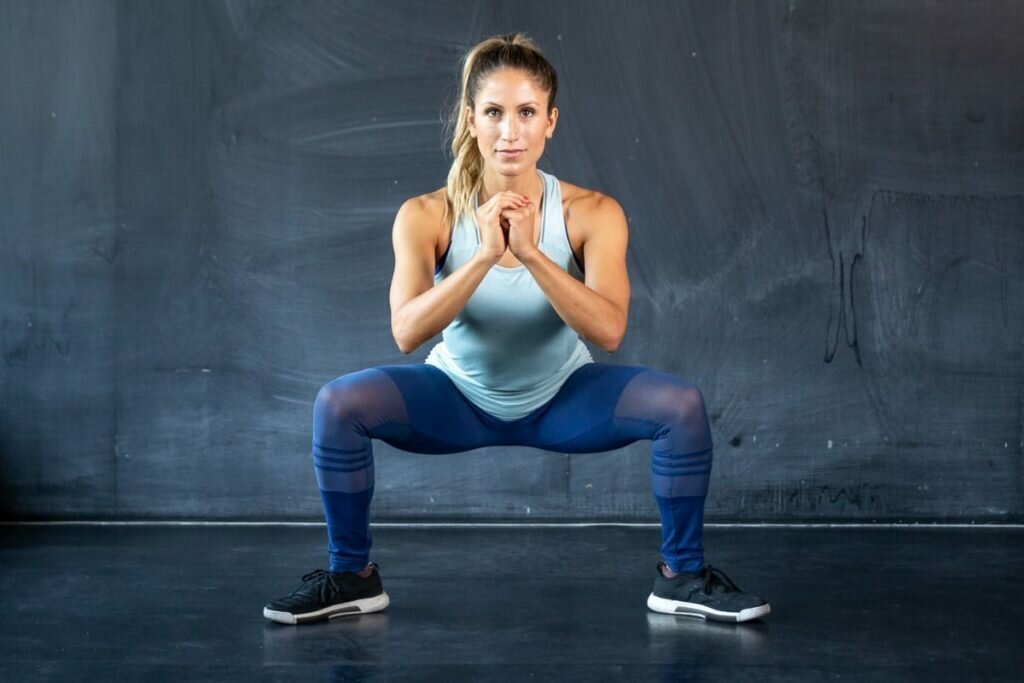
Are squats the key to developing hamstrings?
For years, you’ve been told that basic lower-body exercises are enough to develop bulky hamstrings. Science says otherwise.
Q: Everyone says that squats are the best exercise for developing all the muscles of the legs, but I do not feel it in the muscles of the back of the thigh. Are squats really enough to develop this group?
Some theories will go on forever, and this is one of them. Glossy magazines, articles on the Internet, forum threads, social media feeds and even high-level professional athletes tell about the benefits of squats for the muscles of the back of the thigh. “Just do basic lower body exercises and your hamstrings get the amount of work it needs to grow.” Many take this as an axiom, but such advice, in fact, has no evidence base.

The very idea that the hamstring group is maximally loaded in squats does not seem so reasonable. The muscles of the posterior surface are biarticular, that is, they intersect two joints – the knee and the hip. (Note: An exception is the short head of the hamstring, which only crosses the knee and is not technically a true posterior muscle.) In the knee, the hamstrings work as flexors, and in the hip joint they act as extensions.
What Happens When You Squat Down? Try it yourself. The posterior muscles are shortened at the knee and stretched in the pelvic area. The opposite happens in the concentric phase of the movement when you rise from the squat – the back muscles lengthen at the knee and contract in the pelvis. In fact, the length of the muscle complex itself does not change much throughout the movement, and this is far from an ideal alignment for maximum muscle stimulation.
Research indicates low activity in the hamstrings during basic lower body exercises. In my lab they did a leg press experiment. The hamstrings in this exercise were much less active than the quadriceps – about 25% of the activity of the wide muscles and only a third of the activity of the rectus femoris. Therefore, in the leg press, the muscles of the back surface are not too much trouble. And if you think squats recruit these muscles a lot more, think again.
An experiment conducted in 2009 showed that squats achieve only 27% of the maximum voluntary isometric contraction of the hamstrings. The author of the study concluded that squats “are not the optimal exercise for training back muscles.”
But perhaps you don’t trust measurements of muscle activation very much and argue that only long-term studies of muscle hypertrophy are important. Fair objection. A scientific paper published in the Journal of Orthopedic and Sports Physiotherapy provides direct evidence that squatting does not significantly affect posterior muscle growth.
Participants performed 4 sets of parallel squats using low, medium, or high reps. They trained 3 times a week for 7 weeks. The results showed significant quadriceps hypertrophy in all participants using all rep ranges, while the hamstrings in all groups remained at baseline.
How do you get the back muscles to grow? The answer is simple: make single-joint movements that target this particular group. Isolated hip movements such as straight-legged deadlifts and good morning exercises are good choices. Isolating movements in the knee joint, such as bending the legs , are suitable. Ideally, you should use both types of movement to optimize the growth of this muscle group.
A key feature of isolation single-joint exercises is that when one joint is working, the other is immobile. This creates an advantageous length-to-tension ratio in which the hamstrings contract and shorten throughout their full range of motion.
If your hamstrings are your weakest link, pay more attention to them. For leg workouts, work your back group first to give it maximum stress while you are full of energy. In the long term, this will lead to excellent results.
